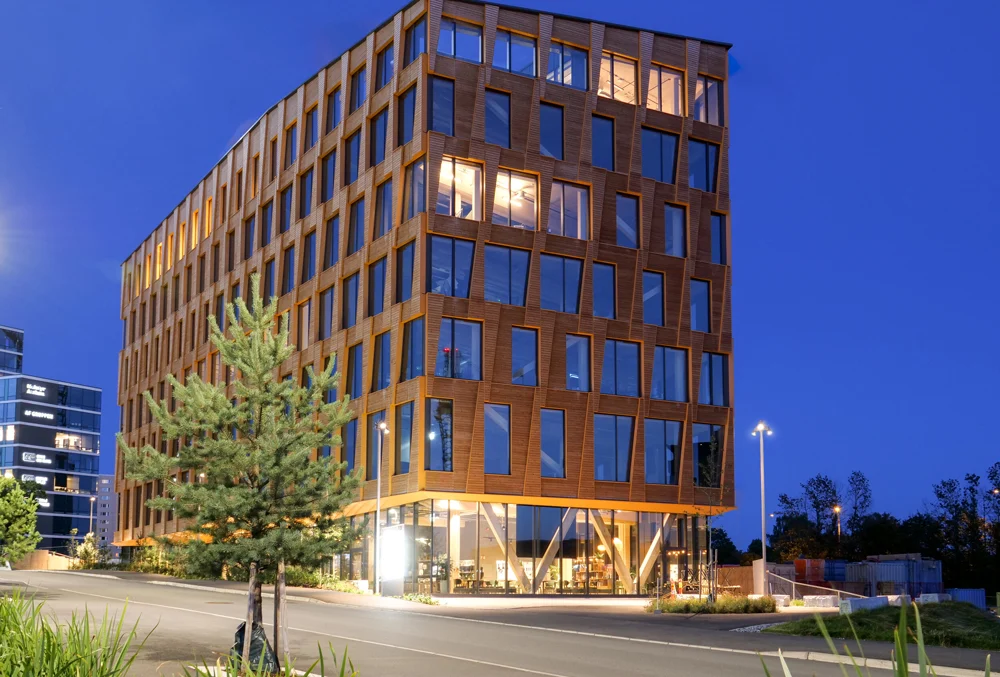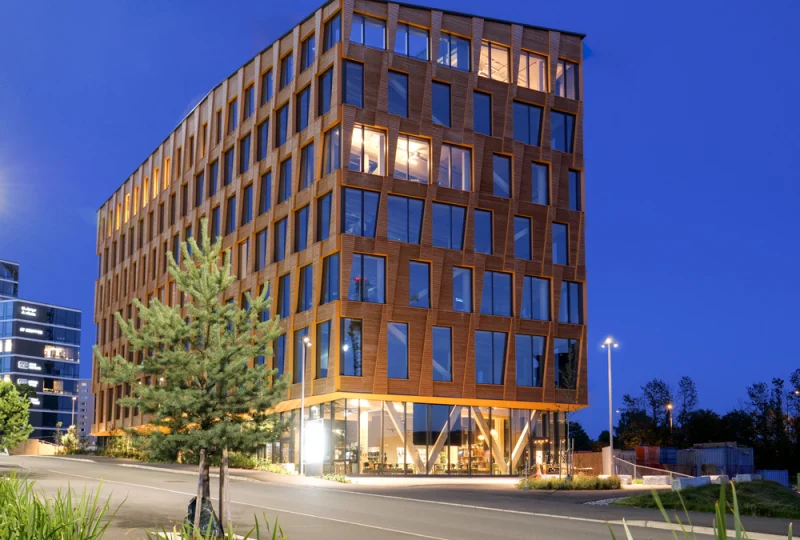Established in 1987, Lund+Slaatto Architects is a renowned architectural practice based in Norway. The design-focused practice offers architecture and design expertise with a team of specialist designers. L+S nurtures innovation through a creative, collaborative, and professionally stimulating work environment.
For many architects, distilling the essence of our design beliefs within our personal space can be… tricky. On the contrary, the award-winning architectural practice seems to have nailed this down. Their self-designed office perfectly encapsulates their ethos; details are thought through and thoroughly resolved. A crystallized concept carries through from exterior to interior, brought to life with a warm, crisp material palette.
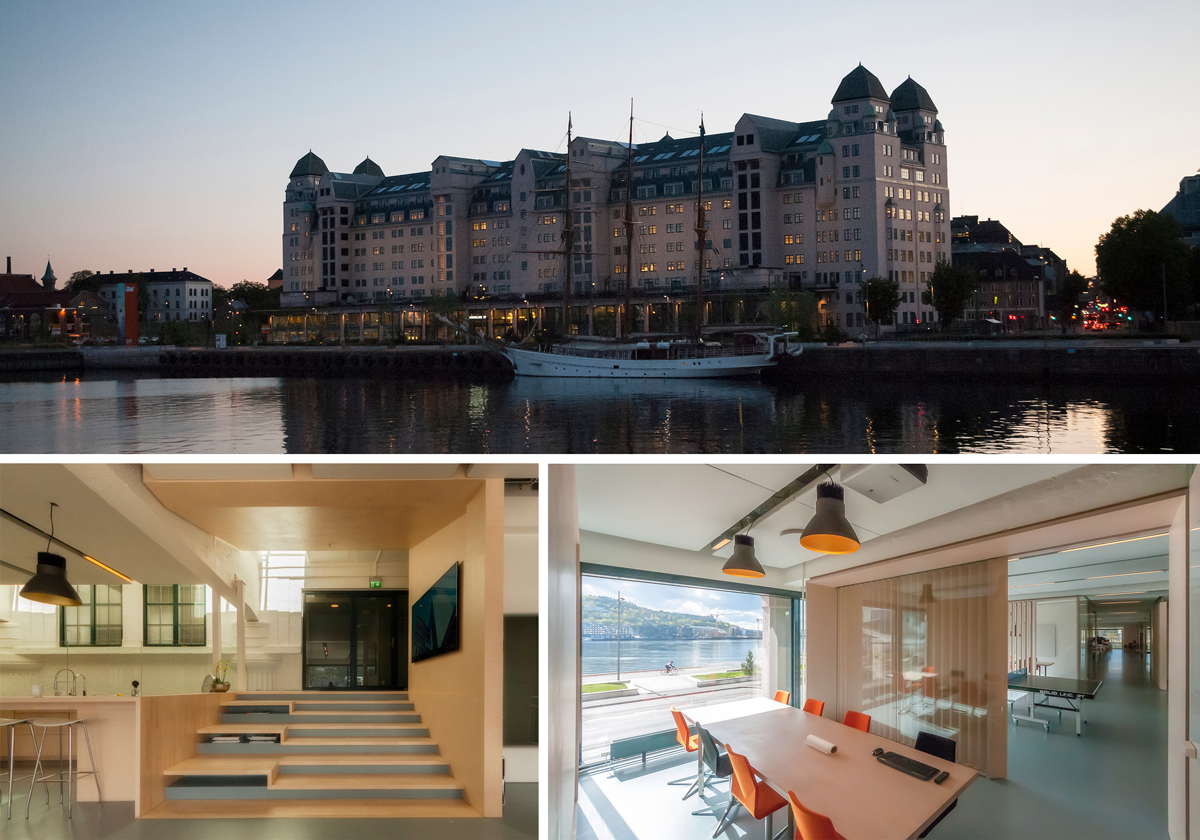
Office envy aside, we chat with architect Henning Hagen Kolås and communication lead, Daniel Lund Godbolt from Lund+Slaatto Architects to explore how the team applies rigor without sacrificing speed when bringing architectural ideas to life.
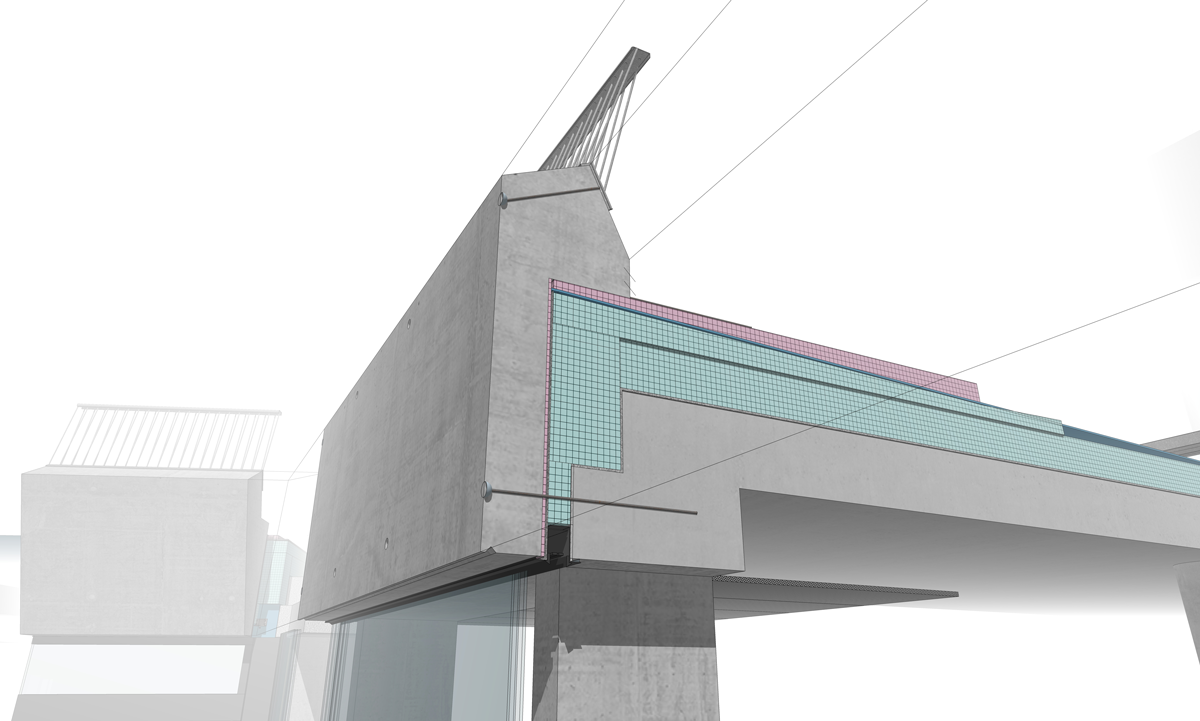
What are the core principles that guide your approach to a design problem?
At Lund+Slaatto, we aim to deliver viable designs and pride ourselves in finding the right solution. Our solutions prioritize the end user by ensuring spatial functionality and rationality. We carry projects through from concept to delivery, specifying robust materials, and detailing for buildability.
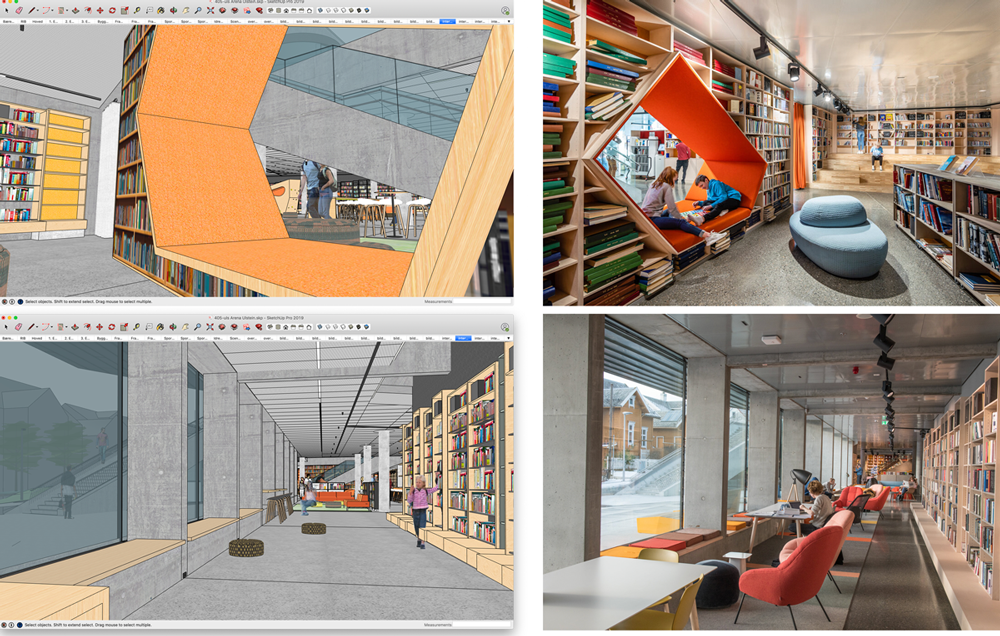
What’s the starting point for any Lund+Slaatto design project?
Every project is unique, but we usually start with sketches on paper, studies in physical models, and models in SketchUp to test volumes in 3D. At weekly communal lunches, teams present their projects for architectural review.
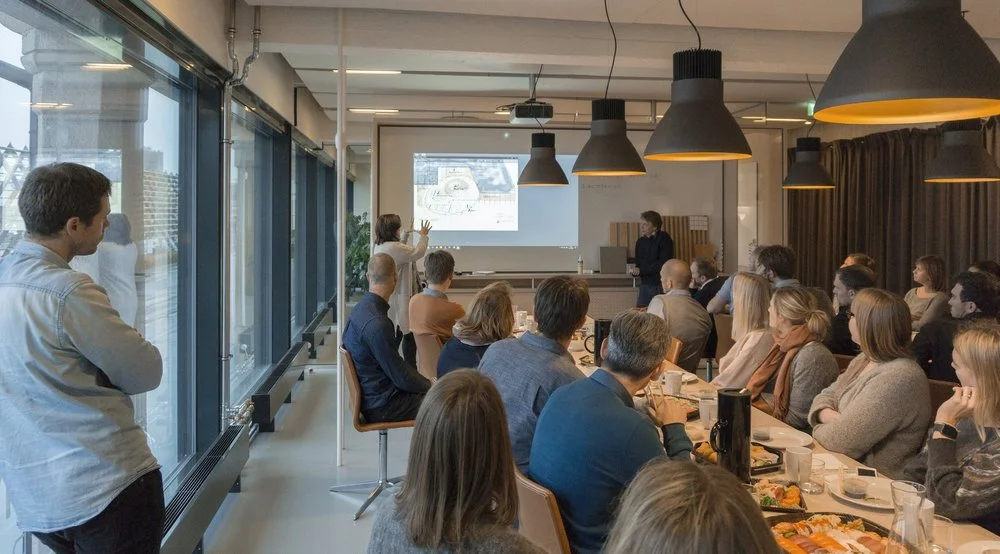
Our fifty-person team is made up of talented professionals with competencies across architectural design, interiors, modeling, visuals, sustainability, planning, and compliance. As such, we are able to leverage each team member’s strength to fine-tune every aspect of each project and carry through our architectural ideas.
How does this translate to your client conversations?
We recognize that it’s not always that easy to look at a plan and understand the spatial qualities of the proposal, especially for clients who typically aren’t architects. Our clients range from corporate businesses, restaurateurs, to government bodies, and our 3D models are the focal point for client meetings. We find it is easier to communicate our design intent by live clicking through SketchUp Scenes. Alternatively, clients can navigate around the model themselves, if desired. This gets them excited about the finished ‘product’ before it’s delivered.
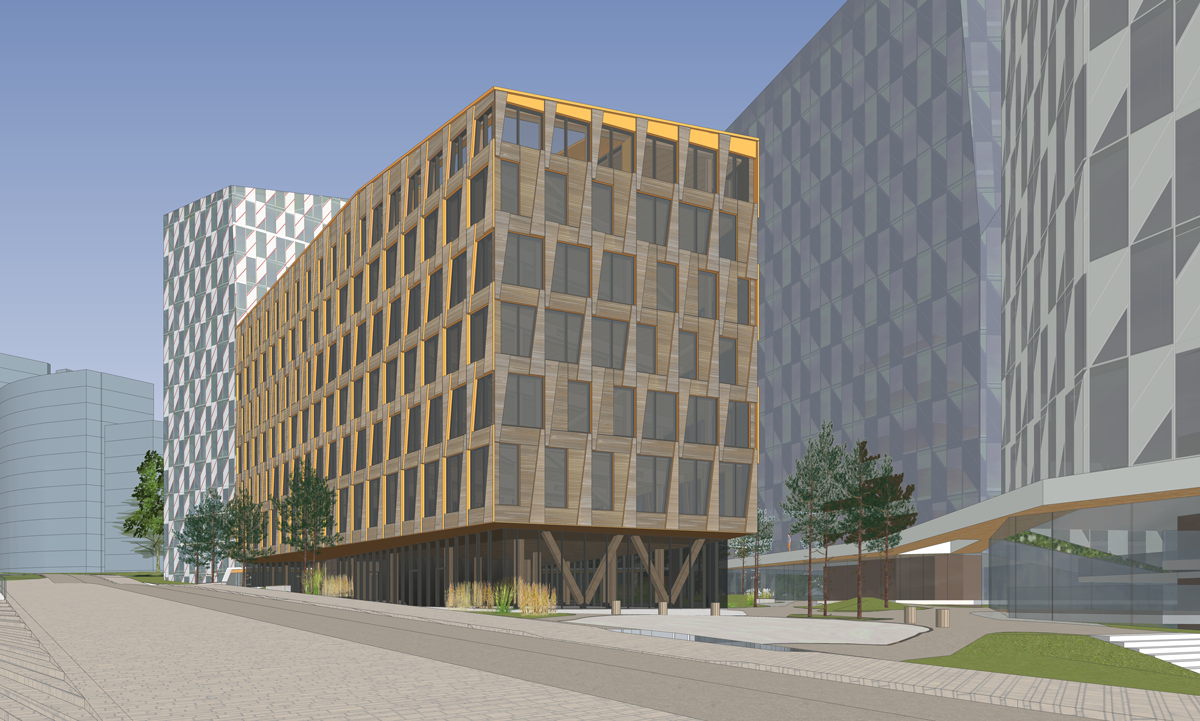
We typically don’t go into presentations saying, “This is the solution for you!” We share our design process and showcase the journey to our proposal. This encourages clients to participate in the design and makes their feedback an integral and important part of the design. We get responses like “I agree with your thought process, but we like this one better.” It’s a win-win for both parties where everybody is able to feel like they are a part of the process.
How is sustainability interpreted in your work?
For us, sustainability means specifying environmentally-friendly materials, and thinking critically about lowering embodied energy, and our carbon footprint. We’ve designed and completed some massive timber constructions.

When Valle Wood was completed, it was the largest commercial building of solid timber construction in Norway. It is certified BREEAM excellent with 40% less energy consumption than equivalent office buildings. It was also a finalist in the Architecture Prize 2019.
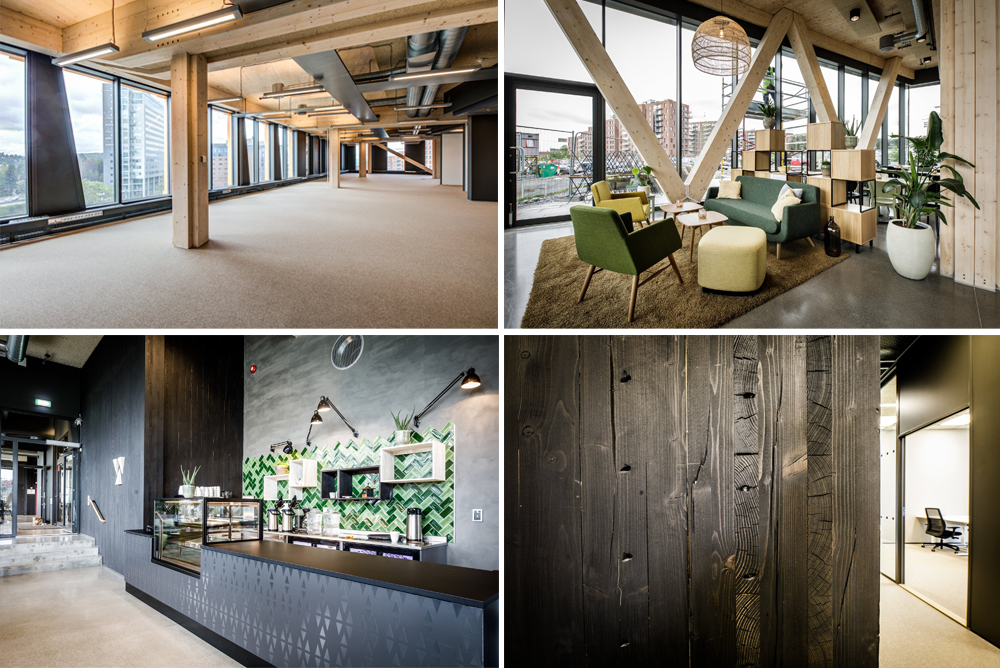
Incidentally, these sustainability considerations help us to deliver comfortable indoor climates whilst reducing energy needs. Additionally, it is vital to consider cultural and contextual sustainability. In the harsh climate of Norway, we have to deliver robust, long-lasting interiors and exteriors that do not require excessive maintenance.
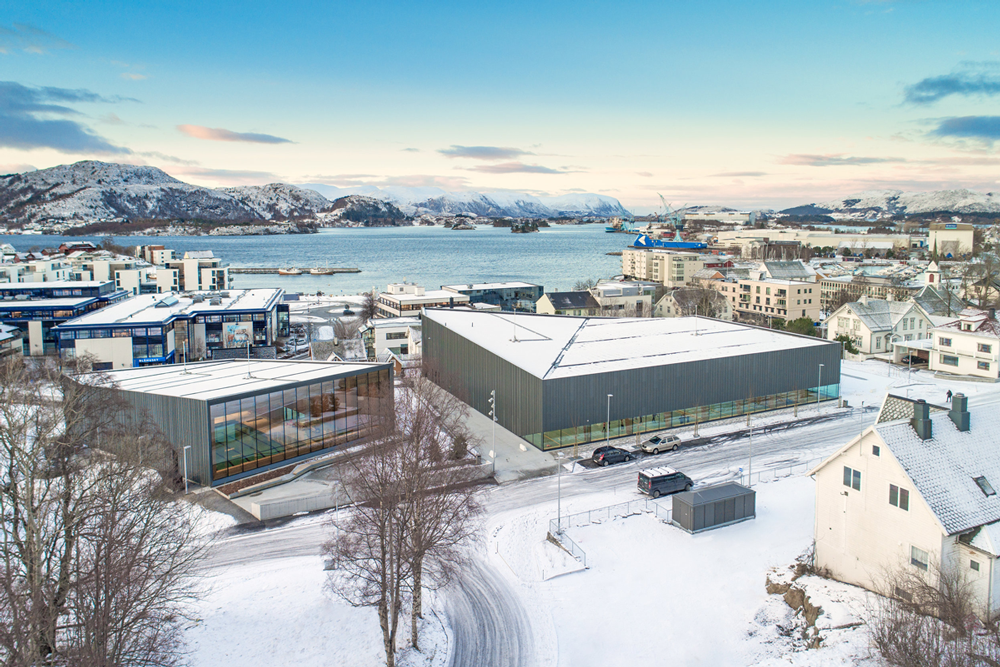
We also think about sustainability in broader terms, by proffering design solutions that encourage a positive change of behavior. On our Ulstein Arena project, for example, we not only delivered the buildings but also improved civic life by creating new urban meeting places for the town of Ulsteinvik.
Technology & workflow
How does modeling support your approach to design?
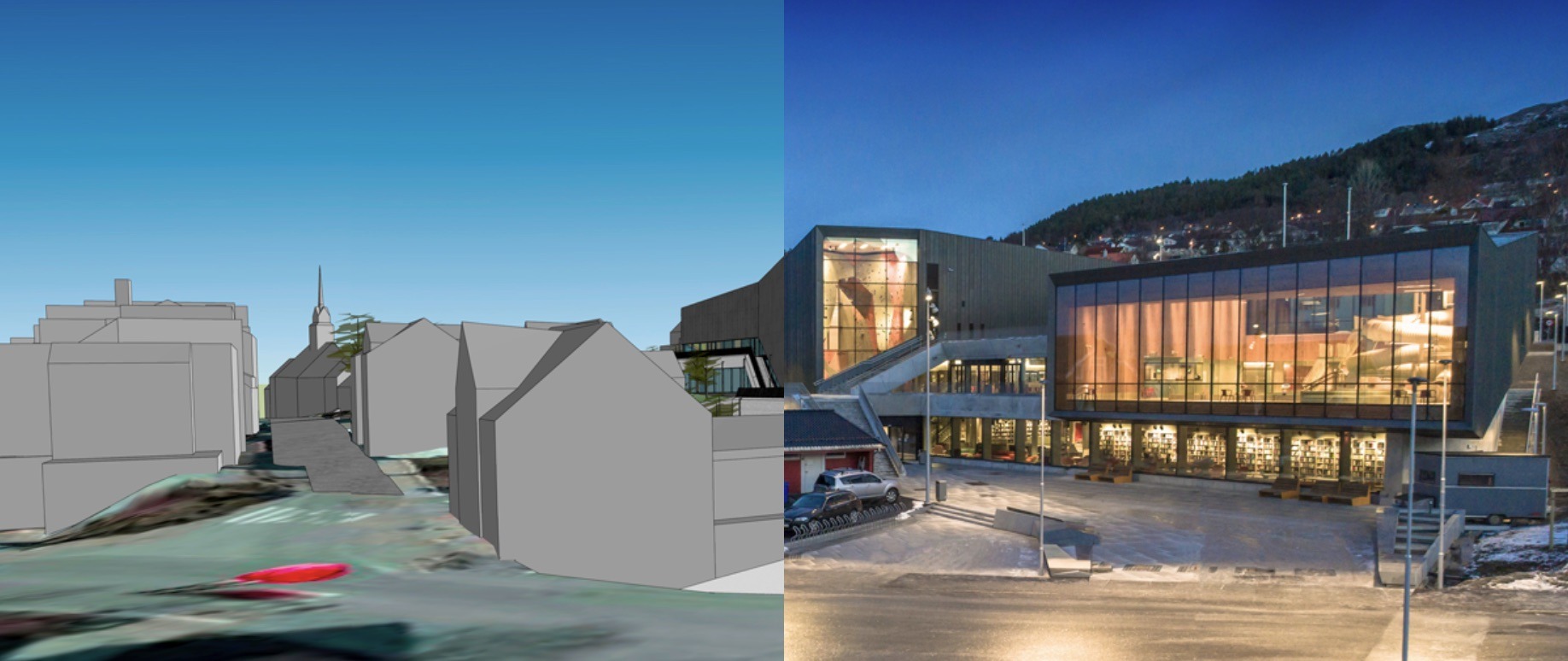
3D modeling is a necessary tool at the office for experimenting with different architectural solutions. It is an efficient way of testing alternatives, communicating decisions to the rest of the office, and presenting proposals to our clients.
Most of the architects at Lund+Slaatto model in SketchUp, from executives to junior staff, and most of our projects from the last ten years were first designed in SketchUp. We’re at a place where creating in 3D makes us design better because it enables us to test many options, fast. The ability to drill down to the details allows you to immerse yourself in the design situation you’re working on.
We begin concept development in SketchUp, exploring site logistics, buildability, detailing, facade design, interior, and furniture layouts as well as materiality in SketchUp. We develop and export concrete and structural details from ArchiCAD and import them back into SketchUp to aid the creative development of elements such as facades, section studies, and interiors.
Tell us how you leverage efficient workflows on fast-paced projects?
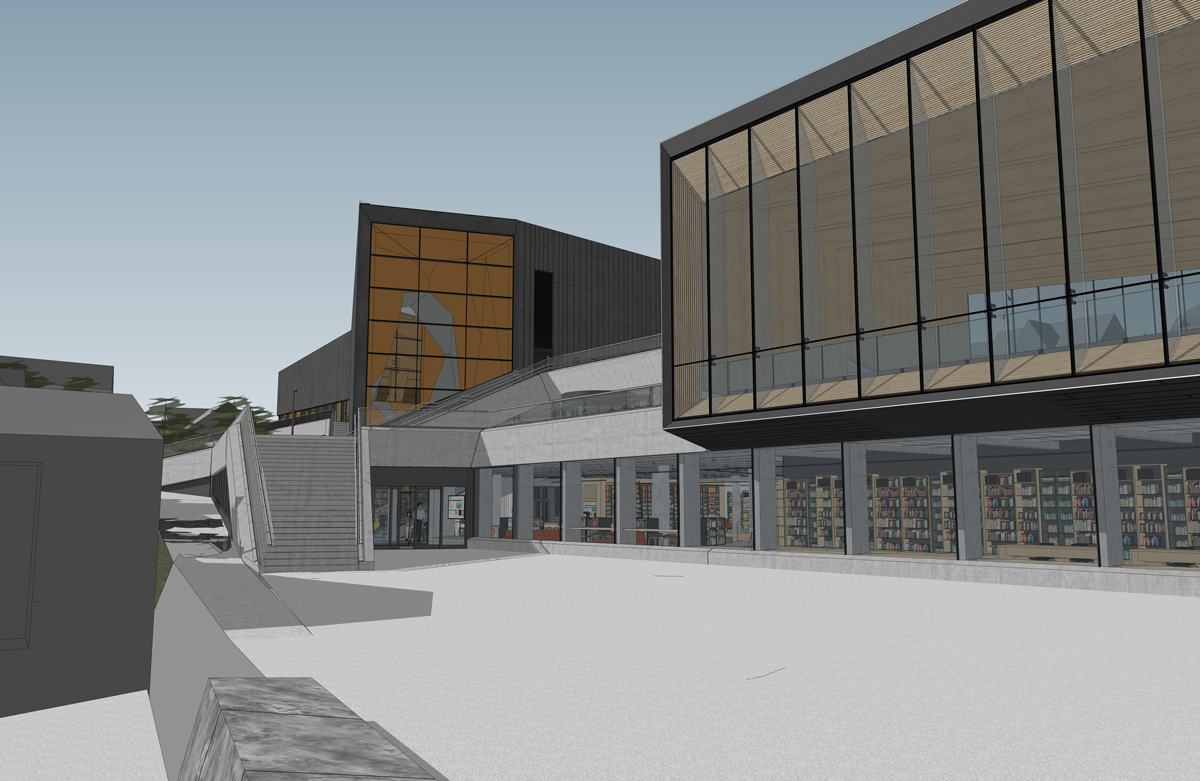
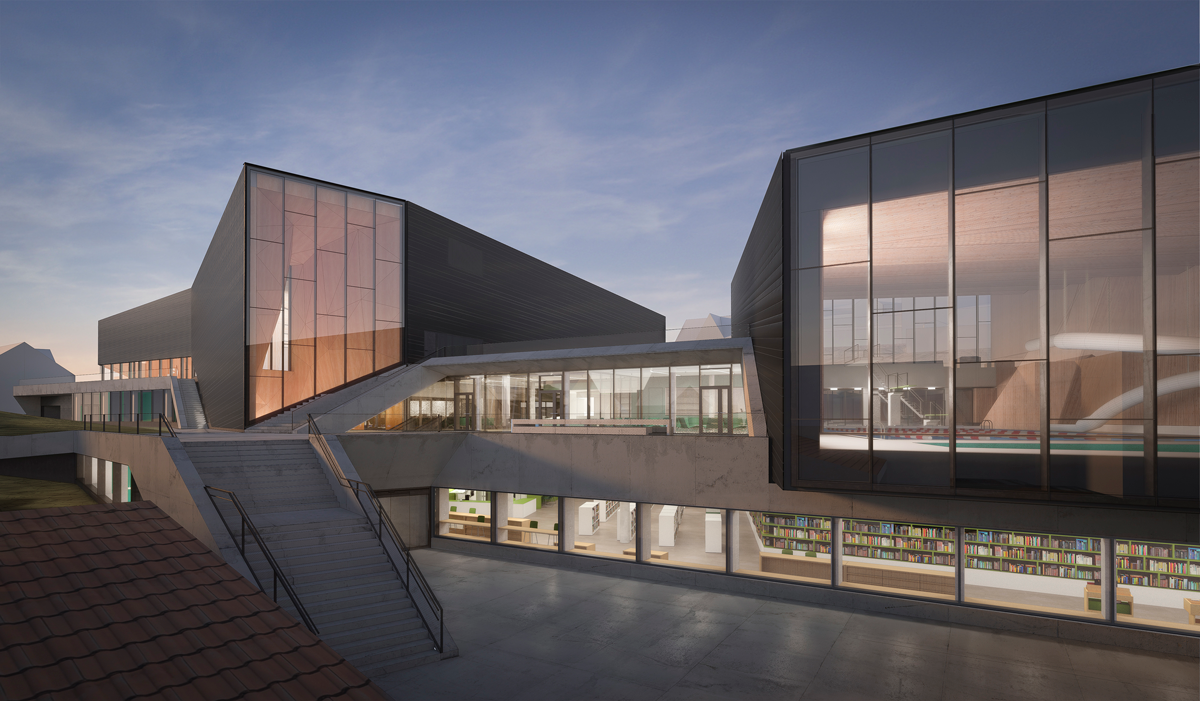
Using Enscape to render our SketchUp models has been transformative, particularly for competition projects which have fixed and tight timelines. We’re able to quickly present proposals with a sense of reality through semi-realistic renders. Typically, the week before a competition submission is dedicated to rendering.
Now, our modeling efficiency saves us a full week and the speed of rendering our SketchUp models in Enscape saves us another week which we can dedicate to fine-tuning the actual design.
That’s two whole weeks we get back within the six-week competition timeline to focus on design. We can now iterate right until the night before a deadline is due and export great renderings in time to submit.
Tell us about one of your award-winning projects, and how it was served by your design principles.
The two uniquely-shaped volumes of Ulstein Arena in Ulsteinvik, Norway hold a sports hall, a library, meeting rooms, and other ancillary spaces. A crucial shipping industry defines the town’s cultural and material identity, and the project takes its material and formal cues from this. The various functions of the arena are clearly identifiable and create a dialogue with the city through their shape and transparency.
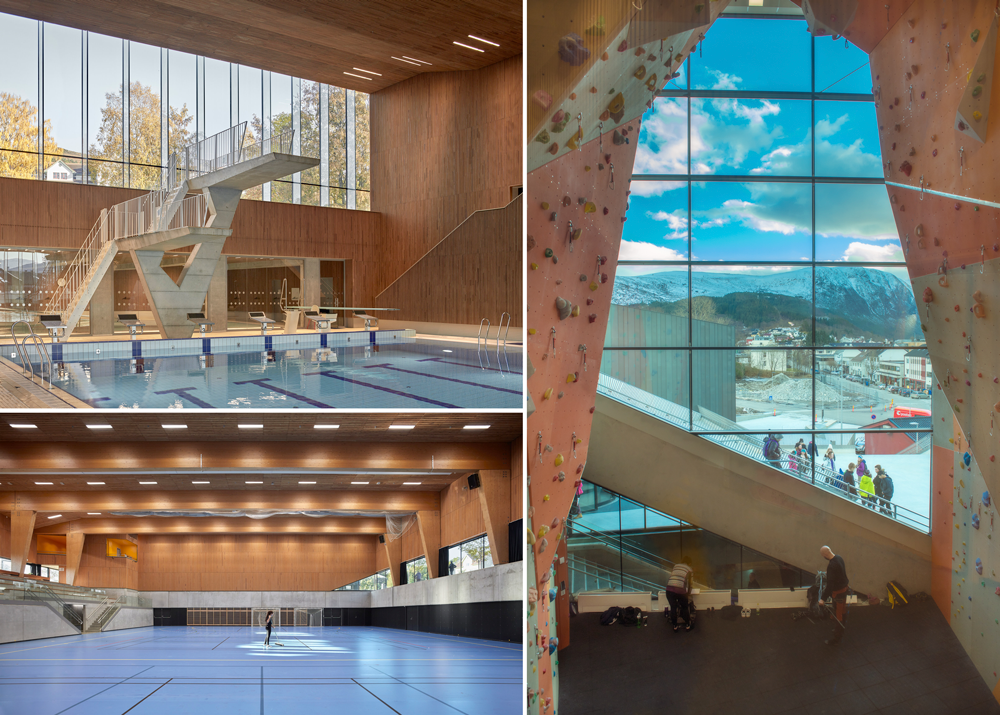
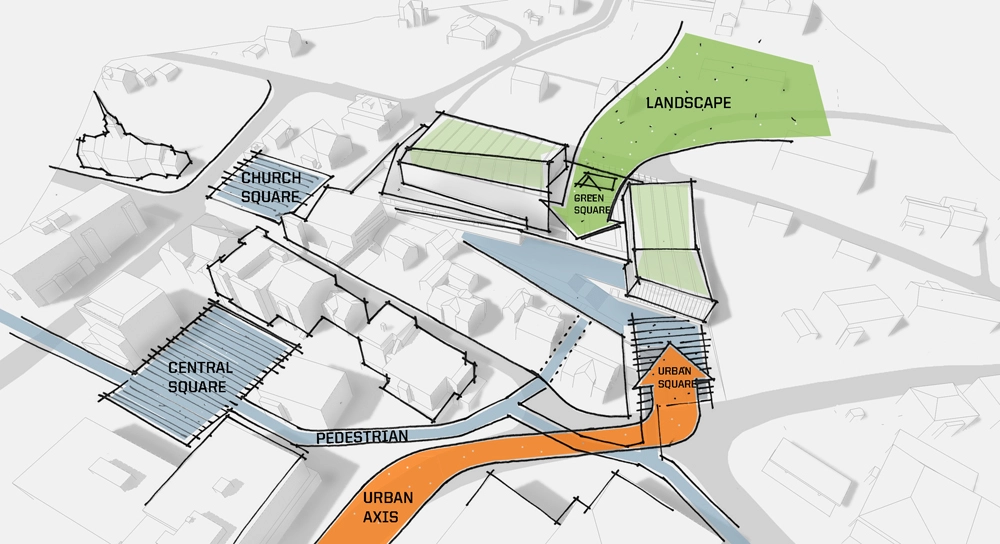
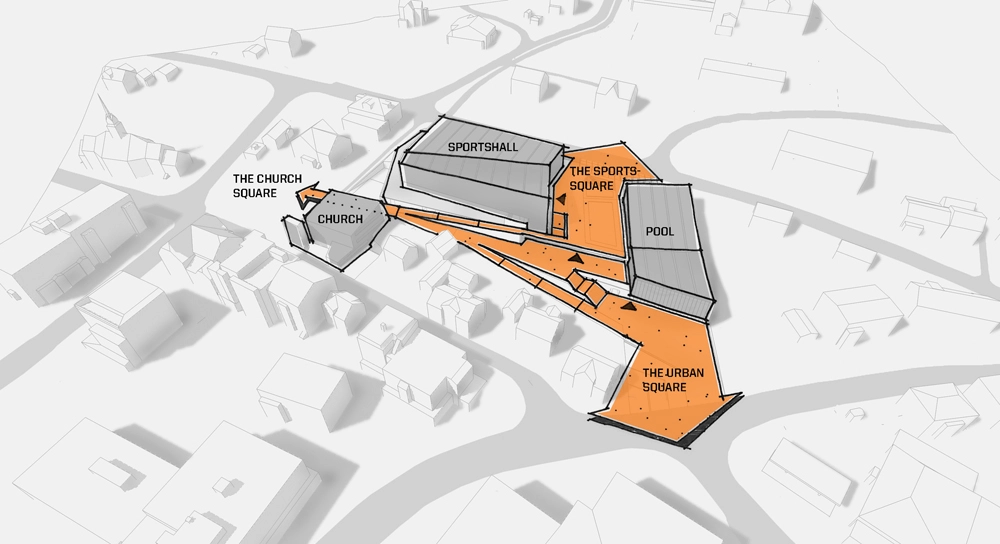
Dividing Ulstein Arena into two main volumes helped adapt the building to Ulsteinvik’s small scale and dense urban structure. It meets the surrounding landscape on three levels and creates a series of new urban spaces that are directly connected to the town’s existing network of pedestrian paths. This allows locals to weave in, around, and out to get to school, or shops.
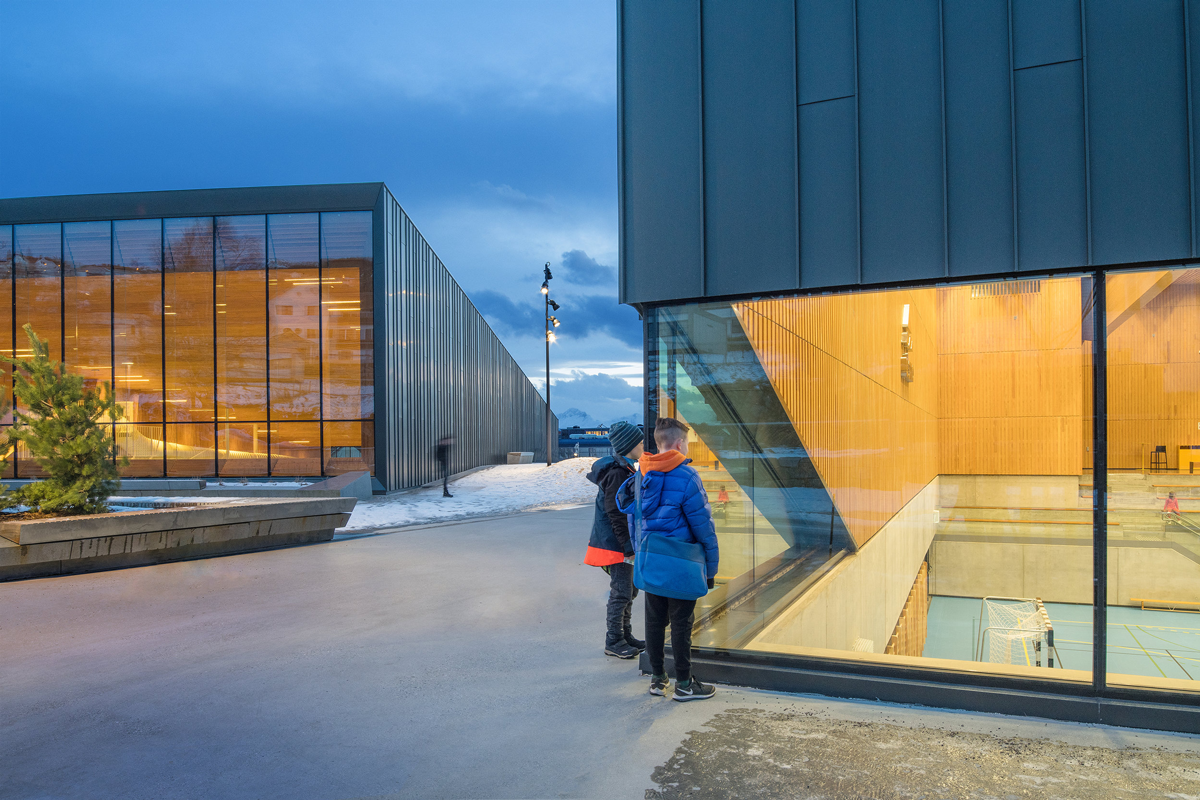
We used SketchUp to model and maintain the highly detailed and unique geometry of the swimming and sports hall. The project went on to win the National Award for Building Quality in 2019.

Does the practice share 3D assets, and material palettes? How does this impact efficiency?
We have a 3D library filled with past and current models, components such as real-life furniture from manufacturers, entourage, and textures. The entire team can and is encouraged to access any asset and be inspired by or implement past details in their work. Every new team member gets an introduction to SketchUp via a shared server, and more importantly our do’s and don’ts for 3D modeling.
We share a broad drawing convention and modeling standards such as ensuring every piece of geometry is on Layer Zero, and grouping objects. Every team member is also introduced to special office shortcuts which are set up on every computer. Beyond the fundamentals, everyone is allowed to flex their creative muscles.
Start modeling with a free 30-day trial or pick the right SketchUp subscription for your workflow.
ABOUT LUND AND SLAATTO
Context, detailing, and choice of materials are central topics for Lund+Slaatto Architects. The ambition is creating projects with lasting value, both for society and for the daily users of the buildings. Lund+Slaatto Architects was established in 1987 and is a further development of the original firm established in 1958 by acclaimed architects Kjell Lund and Nils Slaatto.
